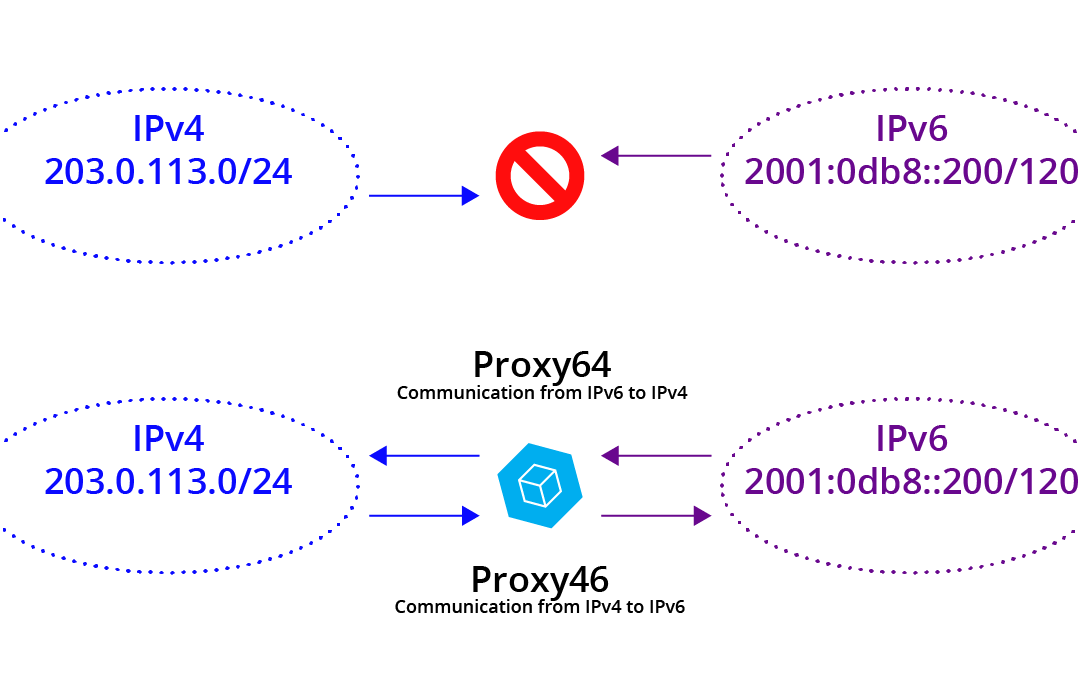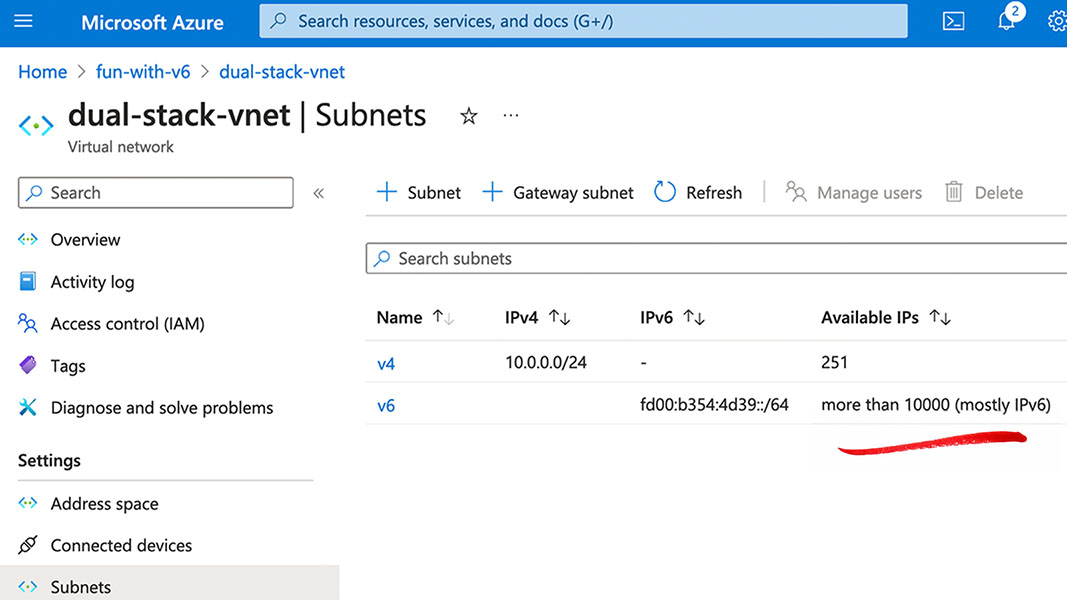How do you decide if the risk of a security feature is worth it? If the cure can be as bad as the illness how do you decide? We have opinions!

Migrating to IPv6 – Managing the Madness (Pt. 1)
Names, Names, Names.
Its the year enterprises get focused on moving to Internet 6. We think it is mostly because of the AWS IPv4 address price increase, but as good a reason as any.

While we don’t expect you to start using ALL of the eighteen quintillion, four hundred forty-six quadrillion, seven hundred forty-four trillion, seventy-three billion, seven hundred nine million, five hundred thousand addresses in your cloud VPCs and VNETs, do remember nature abhors a vaccuum.
If you combine the enormity of the address spaces, and the somewhat impossible-to-verbalize representation of addresses, using addresses as a point of reference at the surface of network administration, monitoring, or security is not going to work much longer.
It is time to let loose your “wordsmiths”!

All of those devices running around your organization need a name, and in fact once we start naming things it won’t stop, we will have multiple names per device, because if one name is good, more are even better.
Of course organizations have been using DNS for years, and the Internet runs on it, but for B2B, enterprise, SaaS we have seen widely varying depths of use.
Some of our more advanced customers have adopted one or more taxonomies for naming devices in their production SaaS environments, albeit perhaps not throughout their internal organization. It can be somewhat of the cobbler’s children having no shoes, we do pay attention to our customers, but often not to ourselves. Here is an anonymized example of such a SaaS taxonomy:
<saas service name abbreviation>.<cloud>.<cloud account abbreviation>.<cloud region>.<production status flag>.<customer id>.<customer abbreviation>.<cost center id>.<machine id>.<cloud instance id>.domain
It is certainly a mouthful, and in fact more so than “fc55:636f:6865:7369:7665::6440:1fe3”, but since most humans DON’T do hex/decimal calculations in their heads, it works by providing understanding via the delineated labels in the full name.
Once you see this type of naming at work in administration and monitoring, you can then see why devices end up with multiple DNS names based on differing organizational taxonomies. We have see technical, organizational, asset management, project-based, and functional naming schemes for devices. At Cohesive we aren’t quite that complex, but if you ask Chatgippety or the LLM of your choice for examples they will provide some overly simplistic examples which give you the gist.
- dell.laptop.8gb.intel.corei5.lenovo.windows.10.ssd.departmentC.corporate.com
- marketing.sales.promotions.abrown.laptop.hr.central.branch.corp.com
- asset.laptop.s345678.la.abrown.decommissioned.finance.southern.us.corp.com
- project.gamma.phase3.teamC.abrown.task3.testing.chicago.corp.com
- function.sales.system.crm.module3.midwest.corp.com
Further Reading
If you have all of naming nailed, good on you. If you don’t here is a great overview by the folks at Cloudflare who create some great content for all of us: https://www.cloudflare.com/learning/dns/what-is-dns/.
For those who are more visual, here is excellent work from a redditor who seemed to have become inactive (sadly) three years back:
https://www.reddit.com/r/programming/comments/klaffg/dns_explained_visually_in_10_minutes/.
For more on the emerging challenges of the IPv6 world you can look back at a few Cohesive posts:
- https://cohesive.net/blog/moving-to-ipv6-herein-lies-madness-part-1/
- https://cohesive.net/blog/moving-to-ipv6-herein-lies-madness-part-2/
And if IPv6 addressing still has you perplexed the team at Oracle did a super job here:
https://docs.oracle.com/cd/E18752_01/html/816-4554/ipv6-overview-10.html.
AND – never forget the Rosetta Stone of IPv4 to IPv6 understanding here:
https://docs.google.com/spreadsheets/d/1pIth3KJH1RbQFJvZmZmpBGq6rMMBhqEmfK-ouSNszNY.
Next up we will show you how VNS3 version 6.6 for Internet6 will help you adopt IPv6 for cloud edge and cloud interior, provding network functions that are better, faster, cheaper than the competing offerings (to NAME just a few reasons to get a Cohesive network).

Moving to IPv6 – herein lies madness (Part 2)
This post is short and essential.
The are two Internets now: the IPv4 Internet and the IPv6 Internet.
The IPv6 Internet is not related to the IPv4 Internet as you have configured it inside, outside, or at the edge of your Enterprise.
IPv6 is not the next version of the Internet protocol; it is the next Internet.

This is the best way to think about it in order to have a more intuitive feel of what is happening underneath it all.
AND – the two Internets never meet. Meaning they are side by side, and applications can move data between them, but in their essence they are different Internets.
Both Internets move across the same layer 2 and physical links, and the protocols above them largely work the same on both, but they are distinct at layer 3, where addressing and naming and routing and firewalling and flow control and many other Internet-y things happen.
A computer may exist on either or both Internets concurrently; an application may bind a network socket to either or both; but they are entirely separate and unrelated.
You will hear about NAT64 (and some NAT46) and the implicit description that addresses are being translated from 6-to-4. I am sure that is the name that will “win” in the industry, but this is a place where we will stand apart. We are calling it Proxy64 and Proxy46, as that is a more realistic and familiar description of what is actually happening. It is not address “translation” in the long standing sense, it is packet TRANSMOGRIFICATION* (according to rules which are in some ways “NAT-like.”) It pulls the payload out of an IPv6 packet and creates an entirely new IPv4 packet. (Some concepts don’t even translate well between the two; these cases are handled by different sofware anywhere from “poorly” to “confusingly.”)

Cohesive’s VNS3 6.6.x is moving out into customer’s hands and with it, our Proxy64 and Proxy46 plugins for communicating between the two Internets.
Let us know how we can help your teams get connections up and running at cloud edge using IPv6.
(ps. If you are just coming up to speed on IPv6 here is a good primer from Microsoft. The “producer-centric” nature of IPv6 comes through, but is a good summary of the industry description and belief systems (don’t let the ‘dotnet’ in the URL scare you).
*Yes that is a C&H reference

Moving to IPv6 – herein lies madness (Part 1)
Well, it’s finally happened. It’s the “year of IPv6” for the enterprise.
With this transition will come a significant amount of “cognitive load” for enterprise application and infrastructure administrators.
After a decade or more, it appears there will finally be a broad-based move to Internet Protocol version 6. All it took was for Amazon to announce a price increase for the use of IPv4 (Internet Protocol version 4) addresses.
IPv6 has been being deployed incrementally since 2012 – but for many of us it has been via background adoption by consumer products that we may not even been aware of; cable companies and mobile phone vendors providing the infrastructure to our homes and devices.
For the b2b software and infrastructure technology used by the enterprise, it remains new and novel. For example, Amazon Cloud has supported some IPv6 for a number of years, both dual stack and single stack, whilst Microsoft Azure Cloud only began in earnest in 2023. Both platforms still have significant limitations and fragmentation of support across products.

So if the tech titans are just getting their heads around IPv6, what are us “normies” supposed to do?
At Cohesive Networks, our plan was to start slipping in support over the course of this year, finishing sometime in 2025 for an expected enterprise demand in 2026. Why haven’t we supported to date? Frankly, “no one uses it” – in that of the SaaS, PaaS, and BPaaS companies we support, none of them have asked for it……until the AWS price increase. Our metal-based competitors like Cisco and Palo Alto have supported it for years, but from our broad experience working with our customers, and our customer’s customers, and our customer’s customer’s outsourced network support people, the feature was a tree falling in the forest.
While there is a need to expand the available address pool, there is conflict and confusion between the “producer-centric” intelligence that created IPv6 and its revisions and implementations to date, and the practical needs, the “consumer-centric” needs, of the people just trying to get their jobs done.
There is a disconnect between the simple needs that we satisfy with IPv4; deploy a server, deploy 10 servers, deploy a cluster of a couple hundred servers; and the massive scale of IPv6 which immediately confronts its business consumers.
At Cohesive, we have done a decent job of reducing much of networking and security to “addresses, routes, and rules.” But even for us, helping customers deal with three hundred forty undecillion, two hundred eighty-two decillion, three hundred sixty-six nonillion, nine hundred twenty octillion, nine hundred thirty-seven septillion addresses is a challenge.
Ok, that number above is the whole space, so maybe I am being overly dramatic.
Let’s just get an AWS VPC or Azure VNET with a single IPv6 subnet; that should be easier to deal with.
Minimal size is a /64, that sounds better. Oops, that is 18,446,744,073,709,500,000 addresses! (For those of you speaking it aloud, that’s eighteen quintillion, four hundred forty-six quadrillion, seven hundred forty-four trillion, seventy-three billion, seven hundred nine million, five hundred thousand addresses).

And for every virtual network/subnet – another eighteen quintillion.
Now, if I have 10, 100 or 1000 servers to deploy – what does it matter? Just use some addresses and carry on.
True enough, but the fact that they come from a potential space of 1.8 x 10^19 is serious cognitive load that is presented to the infrastructure operators, and it is naive to think this doesn’t come at a cost. As computer memory went from 512k on a “FAT MAC” to 96G on my MacbookPro, I didn’t have to confront the gap between 524,288 bytes and 103,079,215,104 bytes in the normal course of my work.
So what do we do? Well for our part, as we release VNS3 6.6 (with IPv6), we are reducing some of this cognitive load and will be working with our customers to ever-simplify the move to IPv6.
In the meantime, here is a Google Spreadsheet we created for our internal use to help us get our heads around the magnitude of the IPv6 space. Feel free to share: https://docs.google.com/spreadsheets/d/1pIth3KJH1RbQFJvZmZmpBGq6rMMBhqEmfK-ouSNszNY/edit#gid=0
Stand Apart – but be Cohesive
I received a number of congratulations on the LinkedIn platform last month when apparently it let people know I have been with Cohesive Networks for 9 years.
As I reflected on this one thing stands out in relief, and that is Cohesive has always “stood apart” within the markets it serves.
Cohesive Networks exists at the confluence of virtualization, cloud, networking and security. We are of course a part of this commercial market but have not been re-directed by every twist and turn of these markets that have come and gone. Flavor and fashion are often the order of the day, and no doubt we have adopted some of the descriptive labels through time. But the labels have not swayed us from our essential mission, getting customers to, through and across the clouds safely.
If you look at the Gartner hype cycle for cloud networking it provides a gallery of differentiators through time: network observability, container/kubernetes networking, multicloud networking, SASE, SSE, Network-as-a-Service, SD-branch, network automation, network function virtualization, software defined networking, zero trust networks, software-defined WAN, micro-segmentation. If you look at these different facets, the tools, techniques, and knowledge to implement these are not that different. What is different is the packaging and the go-to-market.
Because we have been providing a virtual network platform since the clouds began, we have had customers use us for all of these functions. As a result the good news is we have been less “swayed” by flavor and fashion, which has done well for our existing customer. The bad news is we haven’t always best communicated our value to the potential new customer who may be thinking very much in the context of one of these re-packaged approaches.
Our usual inbound leads are “Hi, I think we need your stuff” or “Hi, we are using a lot of your stuff, can we discuss volume discounts and support plans”.
This communication posture stems from the fact that we have often been ahead of our competitors in either implementation or insight, or both. We were the first virtual network appliance in the EC2 cloud, IBM Cloud, many of the “clouds no-more”, and at later dates among the first network and security appliances in Azure and Google.

Cohesive’s patents are for “user controlled networking in 3rd party computing environments”. It is a subtle distinction – but powerful, between what an infrasturcture administrator, network administrator or hypervisor administrator could do at that time, and the freedom of our users on that infrastructure to create any network they wanted. These are encrypted, virtual networks that their infrastructure providers know nothing about, can not see, nor control. Our users in 2009 and beyond could create any secure, mesh, over-the-top network they wanted without the need or expense of the network incumbents who came before us. These customers find us significantly easier, significantly less expensive and made for the cloud without “metal” roots dragging them back to the ground.
When we showed this capability to investors, partners, infra providers, acquirerers – many of them said “I don’t get it” or “we’ll do better (someday)” or “you have to do all this in hardware” and more. By comparison, the customers who found us through web search, cloud conferences, and cloud marketplaces said “that’s what I need” and a subscription cloud networking company was born.

Looking back, it is shocking that our first offering was “virtual subnets”. It is amazing to think about it, but we sold subnets! At that time any cloud you used put your virtual instances in a very poorly segmented 10.0.0.0/8 subnet of the compute virtualization environment. People wanted to control addresses, routes, and rules, and our encrypted mesh overlay provided it. That was our first product-market fit, and of course that has evolved considerably.
This set us on the path of listening to our customers, and asking ourselves quite fundamentally what a network is, and what is it used for, and by whom?
So while we stood apart, of course we were Cohesive.
Networks are all about standards and interoperability, we just did it our own way.
The feedback from customers was “yes” and “more please”. The feedback from the experts often remained “huh”. So we pressed forward in our own autonomic and somewhat autistic manner, only listening to certain market signals and obsessively working to fulfill a vision of networking and security that says “networks are addresses, routes and rules, everything else is implementation detail the customers should rarely see.”

Now in 2024 and beyond, as the chaotic streams of the changing cloud markets, Internet Protocol v6, and the needs for secure AI and private AI collide, my guess is we will still stand apart while still being Cohesive.

Recent Comments